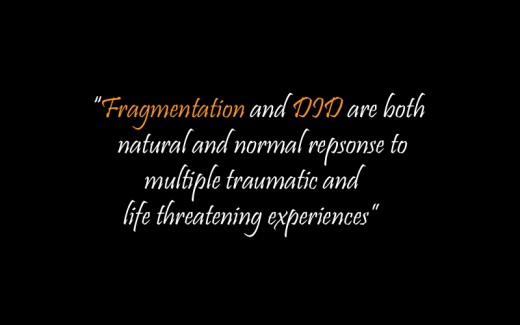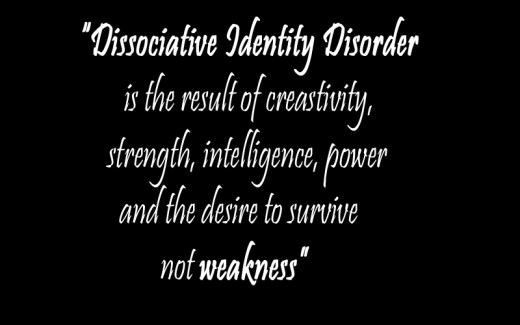Fragmentation and Dissociative Identity Disorder
Fragmentation and DID

Dissociative Identity Disorder
I have been requested by a HUB reader to discuss a specific topic; this topic is the “fragmentation reaction” or what is termed dissociative identity disorder (DID). The full process of the dissociative continuum is discussed in detail in my book, Separated from the Light: A Path Back From Psychological Trauma. But for the purpose of this article and the request, I will simplify and target my remarks to help understanding an extremely difficult human reaction to life-threatening experiences.
The dissociative continuum is the description of the movement an individual symbolically travels internally, within his or her mind and body, to separate themselves to overwhelming pain from life-threatening an event. An individual accomplishes this by escaping into one’s mind while protectively disconnecting from his or her body which is trapped in an abusive or traumatic situation.
When the body is in a life-threatening situation the person symbolically disconnects from the body due to the pain and fear of dying. The abusive or traumatic event is so stressful and overwhelming the person needs to escape from emotional and physical discomfort. The only way to escape reality is through the mind.
I term the process the “unfolding of self”. The individual’s life feels so threatening that the only way to escape is to “mentally dissociate” or travel deeply into his or her mind. The act of dissociating is the mental ability to turn what is "real into unreal”. The elements an individual uses to complete the act of dissociation is creativity, intelligence, perception, power, and strength, not fear and weakness.
It is not only my belief but I have witnessed, in all my years of working with abuse and trauma survivors who have been labeled Dissociative Disorder and Dissociative Identity Disorder. Any person who has survived a horrific life event is in fact extremely creative, intelligent, strong and powerful.
That being said, the process of fragmentation goes far past general separation of head and body which occurs in Dissociative Reaction. Simply, the fragmentation stage focuses on the multiple division of the person's personal characteristics, functions, identity, talents, and qualities due to severe repetitive exposure to overwhelming abusive and traumatic events. Fragmentation reaction is not the breaking apart of the individual identity but the creative disconnecting of the functions of all aspects of the individual in order for the whole not to be captured by the trauma. Fragmentation is normal and natural defensive reaction to further separate the "self" from the destructive reality of what is happening to them.
Fragmentation or DID is Not a Personal Weakness

Takeaway
An example of this is the protection act is better understood if you look at how armadillos protect themselves. When an armadillo is threatened, it will roll up into a ball to protect its core. The greater the threat the tighter the armadillo will curl up. Each layer of skin takes on more and more independence and responsibility in an attempt to save their vulnerable stomach or inner core.
Human dissociation mimics this example. The greater the threat the more creative and intelligent the response is to save the inner core. So when the outside is under attack, the person exerts more effort into separating the mind from a harmful, life-threating, and painful reality. If this act does not keep the overwhelming pain away, the mind then puts all its energy hiding all human characteristics such as skills, traits, and qualities into mental compartments. If all that effort creativeness, strength, and power fail then the person's emphasis is placed increasing the effectiveness of the individual’s ability to further separating from an untenable reality by hiding his or her characteristics into more compartments or termed "parts".
Truly what I have discussed is a normal, natural and healthy human response to an abnormal, painful and life-threatening situations. There are many recorded cases in history of abuse survivors, trauma survivors, combat soldiers and veterans that demonstrate what I have discussed in this article. Every survivor is creative, intelligent, strong, and powerful. All showed extraordinary survival abilities against overwhelming odds and possible death. There are countless stories of humans in many different cultures and different ages who reacted internally the same way which supports what I have discussed.
Learn more by visiting this website
© 2010 Bill Tollefson








